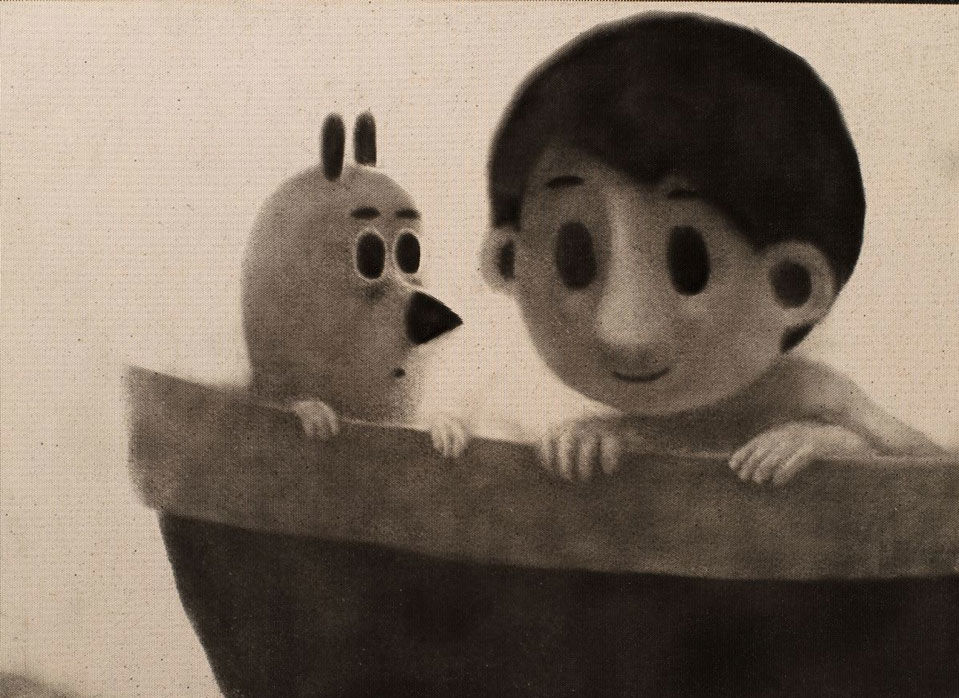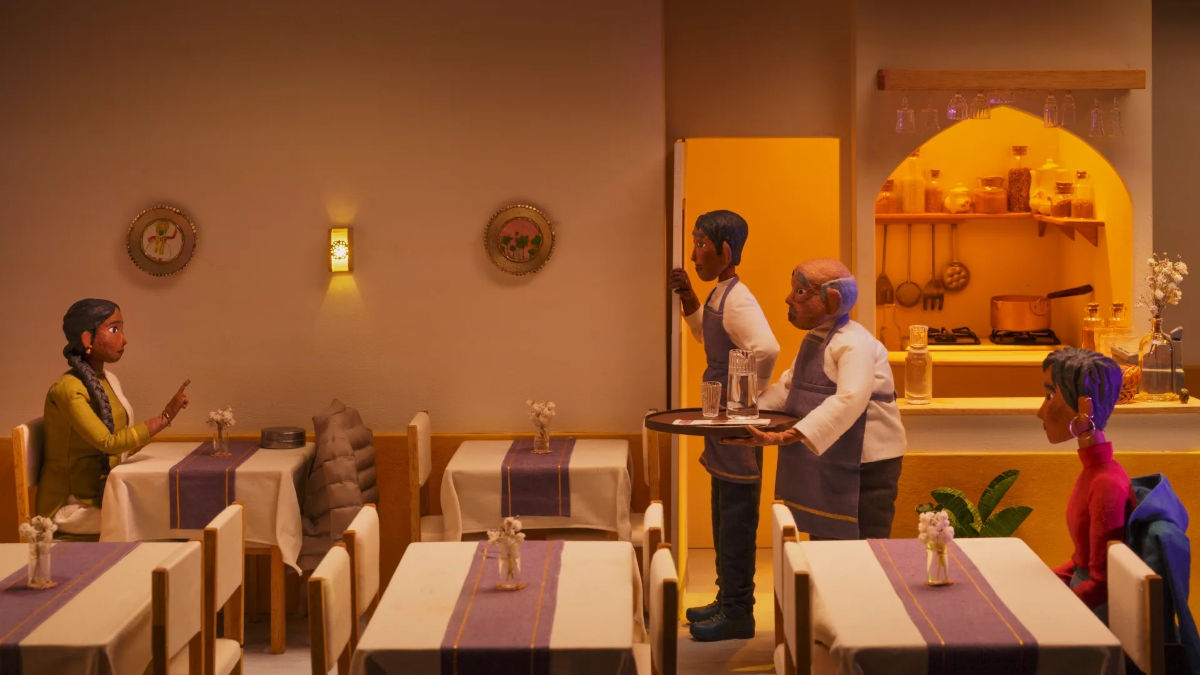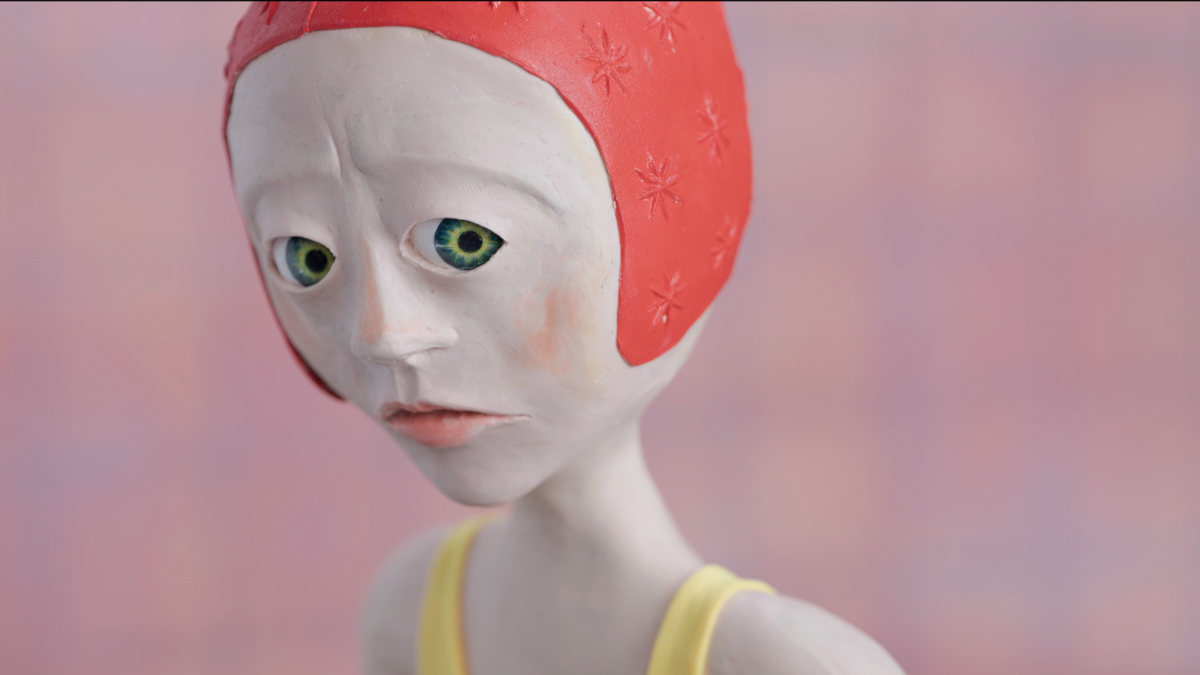Looking for Character: Interview with David Doutel and Vasco Sá
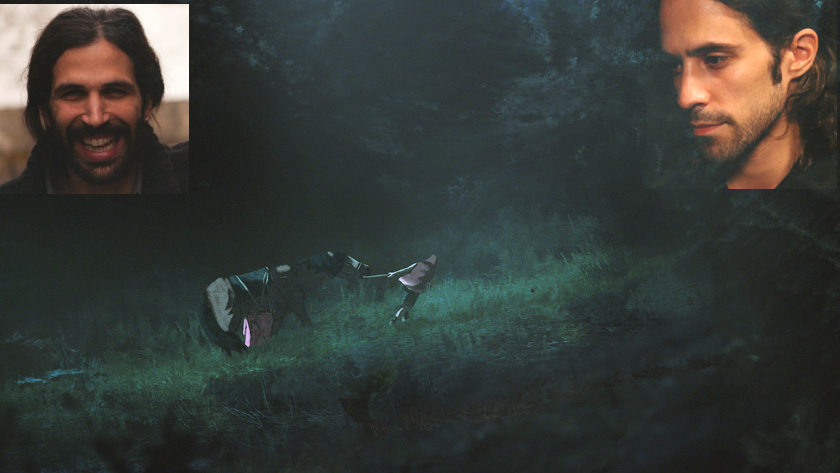
The 14-minute animation short 'Garrano', a co-production between Portugal (Bando à Parte) and Lithuania (Art Shot) marks another collaboration by David Doutel and Vasco Sá. David and Vasco have been friends and partners for a long time, and they have created shorts of strong visual and narrative impact. Since "The Shoemaker" from 2012, passing for 'Soot' (2014), 'Augur' (2018), and now 'Garrano' (2022), we can identify not just a particular aesthetic but also a way to look at the human drama. There is a markable male presence in their shorts; all their characters are men. However, I can find the female presence in their narratives since they talked about the loss, the losing sadness, the hope lack, the resilience, the need for protection, the difficulty in facing the time, and the imponderable.
"A Garrano horse is forced to pull a heavy load under a blazing sun. Young boy Joel discovers a man who is about to set a forest on fire."
'Garrano' seems to close a 'tetralogy'. We can find hope in 'The shoemaker' character, who gets out of his boring life looking for a new challenge. In the 'Soot', there is no place to go since the character is tied to the past and to a personal loss, while in 'Augur' is a little similar, but this time the main character is chaining to a relative, in a kind of commitment that is not shown or explicit in the story. However, with 'Garrano', we can identify the same hopelessness and irresponsibility that sometimes cause unaccountable loss, as happened in Portugal due to the fires in 2018.
Watch the Garrano trailer:
ZF: How did you come up with the idea for this film? Does it have anything to do with the fires in Portugal?
DD: Yes, it will always be related to the fires in Portugal. Our films always end up being based on the construction of universes that, despite being fictional, are grounded on a reality that is close to us. In this case, we would say that the spark was really the Fire and its ability to bewitch us and its relationship with the wild side of life. To this starting point, we added our interest in the Garrano horse, an animal that lives in a semi-wild state in the north of Portugal. It used to be a handy horse for agricultural work, but it has lost its usefulness in recent decades, and consequently, it has lost space to exist.
In Portugal, our relationship with Fire as an element is very clouded by the constant news of forest fires. We were interested in thinking about the deliberate act of starting a fire and additionally questioning the purpose, motivations, and social context. The film lies somewhere in the hesitation between good and evil, the interplay of survival with free will, and the dependence on our usefulness as a cause for life.
VS: It is essential to say that we do not have a formula or a pre-defined thought about the subjects we want to address in our films. All arise from long debates and discussions around ideas, convictions, points of view, and disagreements. And it is from there that, in a very organic but also very chewed way, the foundations emerge for what we think is crucial to address and, ultimately, for what we want to make visible.
ZF: How long did it take to make the film? Please tell me a little about the process?
VS: The film took approximately three years to complete. Maybe a little longer.
The hardest thing was probably to make part of the film isolated due to the pandemic. Despite the various difficulties arising from making a film remotely, mainly related to time and communication, we feel that, with the group apart, we've lost a significant part of the process, as much as all the fun inherent in working altogether. We love to feel the team and the atmosphere generated around the film. We're sure that, in many ways, this affected the film. It was frankly more challenging to make it. However, looking at it from a distance, we are pleased with everyone's effort and the film itself.

ZF: Which part was the hardest to do? And which one did you like the most?
DD: Undoubtedly, along with the initial phase, one of the most laborious parts of our films, which we consider fundamental, is the final phase of compositing and editing. At this stage, we rethink everything that has been designed, animated, and painted so far. We have transformed our films a lot at this stage. This moment of manipulation is a moment of great intensity. We always end up feeling that it is during these final six months that we genuinely inhabit the film's universe.
VS: One of the most exciting parts of our work, which gives us more pleasure in what we do, is probably the debate around the ideas for the film. We always try to find points of convergence that we think may be interesting to explore. And all these debates, the doubts that arise in that process, as well as the achievements that come out of it, are perhaps more remarkable to us than the film itself.
Although we've experienced a large part of the production of this film looking at each other through a rectangle on a screen, it was an enormous pleasure to work with our Portuguese team at BAP in Portugal and with our Lithuanian team at Art Shot.
ZF: Did you use rotoscoping?
VS: That is actually a question that comes up very frequently, probably because our films have a pretty realistic representation. The truth is that we never use rotoscoping, and everything is always created and designed traditionally. The way we represent our characters, their actions, their gestures, how we paint them, give them light, and integrate them into the scenarios can actually cause that sensation, but that's about it.
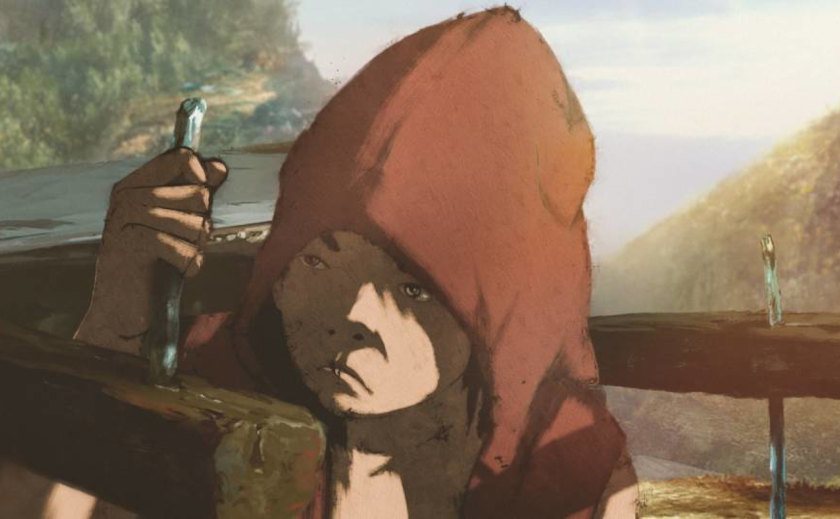
The people who animate our films understand what we're looking for in character animation, and they do a fantastic job in that regard. Even the spaces where the characters inhabit are created from scratch, and they are never a factual representation of an actual location.
ZF: How do you divide the work between the two of you?
VS: We've been working together for a long time now, and, among many other things, we have already co-directed four shorts. Therefore, we've had enough time to build a natural process of creating the universe of the films. In fact, from the genesis of the idea, through the script, storyboard, etc., everything is done together. We do very few things individually because we both like to get our hands dirty. Nonetheless, there's always one thing or two that we got used to exploring more individually in a very natural way: the compositing is done by David, and I do the backgrounds of the films.
DD: Still, we both converge on the final product and make changes and suggestions to each other's work to find the final image. From our point of view, these are never Vasco's or David's films, but they are films to which we both contributed as if we were sculpting with four hands.
ZF: I notice that there is always a powerful male presence in your films. Could you tell me why?
DD: That presence exists indeed, but that choice was not objective in any of our films. None of them start with character development. They all begin with a context, a place, or a specific subject. From there, we end up discovering a universe from which the characters naturally emerge, along with their virtues and difficulties. If we go through all four short films very quickly, we can note that the contexts and themes we chose to address have, in their origins, this male presence: the shoemaker, the caretaker of the bull that covers the village (Agouro), the arsonist-scrap dealer (Garrano). The only exception, which breaks this logic a little, is Soot, where we went back to our childhood searching for memories. We both had an assiduous male companion in street games: in my case, my brother was; in Vasco's, his neighbor. Hence, all the choices and intuitions inherent to the process of writing and directing an animated film naturally start to emerge… In our case, they have been set up until today on the primary reality characteristics that we intend to portray.
ZF: There is always some kind of loss in your films, except for The Shoemaker. A loss of dreams, innocence, or the chance for a better future. Could you tell me a little about that?
DD: In fact, there is always a loss. But there is also renewal in all of them and, in some way, some release. There is a balance that seems to take a long time to re-establish in our characters' lives. And also, there is always a glimmer of the possibility of a new balance in every film. Perhaps, as a reflection of the way we perceive reality…
There is a certain disenchantment in the characters that inhabit the different spaces that we created in the films. In all cases, space itself is a place on the verge of extinction. In the places we portray, the loss is taken for granted; as such, we end up looking for the traces of humanity that still inhabit there, perhaps in an attempt to make them live longer.

ZF: Looking at the four short films you've produced and how you mentioned Fire as an "element", a question arises for me: Your first short, 'The Shoemaker' seems to be well connected to "Earth" (by the color, the object shoe, which is used to tread the earth and results from manipulating the matter). The second, 'Soot', seems to be linked to the Air element, the wind, the smoke, and memories. While 'Augur', of course, is linked to Water, the lake, the storm, and the cold. And 'Garrano', logically to Fire, as you identified. Am I right?
VS: We actually talked about that fact between ourselves. We can say that the elements appeared, and we became aware of this evidence over time. Perhaps they emerged naturally, but there was also space for that to happen due to the themes we chose and how we wanted to explore them symbolically. Its utilization will always be mediated by the sensations and meanings we retain from them, which go far beyond the narrative game, expanding it.
DD: In addition to the narrative and thematic side, it is essential to say that the elements present in the films were, in every case, decisive for the visual record. The film technique itself was shaped according to the scenic spaces. Or vice versa… In some cases, it may have been the desire to do things in a certain way that led us to emphasize the presence of certain elements in each film. In 'Garrano', for example, even before we found the script, we really wanted to explore the representation of Fire by using oil painting. For us, it seemed that the way to animate Fire was similar to the animation of fluids, creating a relationship between matter and images, which motivated us to move forward.
VS: And as a conclusion, if we analyze our films by looking at the elements of nature, we can also clearly perceive the four seasons in them: The 'Soot''s Spring, the Summer of 'Garrano'; the 'Shoemaker''s Autumn; and the 'Augur"'s Winter.
ZF: And if these four shorts form a stage of Vasco and David's work, what would be the new challenges?
DD: There was never a plan for some sense of ensemble in the films, and they naturally got connected with each other as we went forward. We always work on top of what we've already left behind and what we keep discovering—both in the films we've already made and in ourselves as time passes.
Now, looking back, it is evident that some unity and continuity can be found in the four films. But for us, this does not mean that we are stuck in the way of thinking and doing them. On the contrary, we feel that there are many worlds to explore still and many doors to open.
VS: One can say that 'Garrano' ends a cycle, but the only reason for this is that we are starting a feature film at this moment, called 'Una'.
DD: A project of this nature and dimension will bring, by itself, different challenges of a different density, time, and involvement, which we hope will take us to places we have not yet walked when imagining the films we have made so far.
'After losing her mother and being torn away from her childhood village, UNA has become a sullen teenager, disconnected from social reality. As she tries to evade within her inner world, she discovers a clear icy landscape inhabited by a fearless child whom she calls NUAH. After countless adventures, UNA finds herself trapped in her fantasies and forced to undertake a painful initiatory journey that will bring her back to life and a world that needs transformation - FIlm Synopsis
ZF: Thank you for that guys, and congratulations on your good work!

Una - concept image (c) Bando A Parte
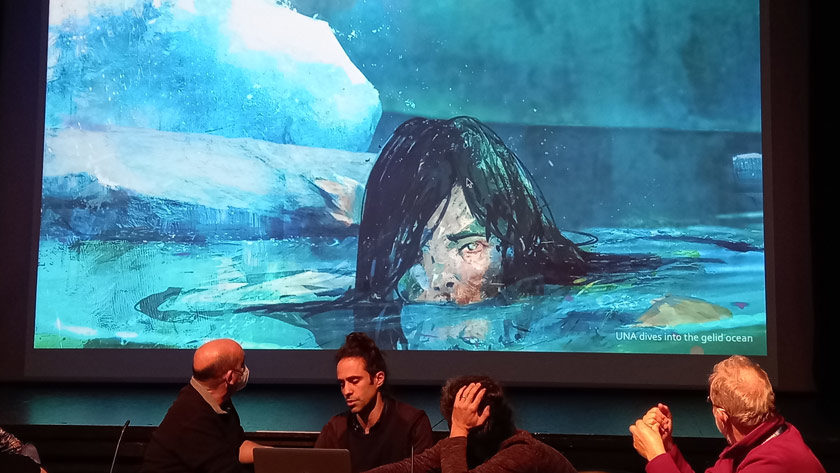
Monstra 2022 UNA Presentation (photo credits: Claudio Roberto/Eliane Gordeeff)
CREDITS:
Garrano, 2022
Production: Bap, Artshot | Distribution: Square Eyes — Wouter Jansen, Sanne Jehoul | Animation Techniques: 2D drawing digital animation, Digital painting, Oil painting
Direction: David Doutel, Vasco Sá | Script: David Doutel, Vasco Sá | Music: Jonas Jurkūnas | Background Design: Vasco Sá | Layout Design: Miguel Lima, Vasco Sá | Animation: Alexandra Ramires, Leonor Pacheco, Miguel Lima, Vykintas Labanauskas | Painting, Coloring: Aurelijus Čiupas, David Doutel, Gediminas Skyrius, Pijus Balkaitis, Teresa Baroet, Valentina Bykova | Compositing: David Doutel, Inês Munhoz | Sound Design: Bernardo Bento | Producers: Agnė Adomėnė, David Doutel, Rodrigo Areias, Vasco Sá
About David Doutel and Vascl Sá (edited from AGÊNCIA – PORTUGUESE SHORT FILM AGENCY)
David Doutel was born in Porto, Portugal, in 1983. He graduated in Sound and Image at the UCP School of Arts with extensive training in Animation. For the last ten years, he has developed his work in the field of independent animation short films, both as a director, animator, and production director. He has developed his career alongside Vasco Sá, with whom he shares the experience of direction on their films. David has been working with Bando à Parte ('BAP Animation') since 2011 and, together with Vasco Sá, has been responsible for the animation production direction and executive production.
Vasco Sá was born in Porto in 1979. With rooted ancestry in the northern mountainous region of Portugal, he spent his first eighteen years of life at Trás-os-Montes (Behind-the-Mountains), before he moved to Porto, where he got his Master's degree in Sound and Image from the School of Arts (UCP). In this context, he meets David Doutel, with whom he has shared several projects awarded nationally and internationally. Since 2011 he has been collaborating with the production company Bando à Parte (he is one of the founders of BAP-Animation Studio), where he has integrated the team of multiple films by different authors. With David Doutel, both are currently working on their first animated feature film, 'UNA'.
Garrano had its premiere at Animafest, World Festival of Animated Films Zagreb, Croatia. The short film will be also screened at Annecy, Festival International du Film d' Animation, France
contributed by: Eliane Gordeeff




